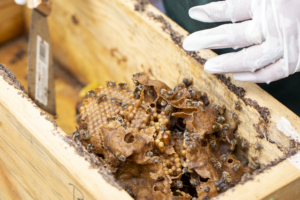
Sustainable packaging
Sustainable packaging refers to sourcing, developing, and using packaging solutions that have minimal environmental impact and footprint. Which means it is environmentally friendly and does not contribute to the further depletion of natural resources. At the same time, it is safe for human health. It should also meet many standards that will benefit both consumers and manufacturers. Is there a chance to find a solution?

Why do we use packaging?
Packaging protects products from damage and helps them stay fresh longer. However, their dark side is that they have a negative impact on the environment. Although the packaging is made of plastic, which has no negative effect on food; reducing this material is now at a premium. Finding sustainable packaging for fresh and perishable food is a big challenge. What’s more, the absence of plastic packaging shortens the shelf life of products, which results in more food wasted. That makes the issue even more complicated.

Can we change something?
What is needed is a change in the perception of the problem and a willingness to help bring about change. As consumers, we can also contribute to the impact on producers who do not change their packaging to green. First, choose products that are not packaged in plastic. It’s not healthy or trendy! Secondly, use your own grocery bags or even your own vegetable nets or jars. In many Asian countries or European small towns, it is nothing new to come for your favorite pickle with your own jar.
Let us remember that we should account for and influence, above all, the giants of the industry. It is a group of the world’s leading concerns whose products have the greatest impact on the amount of plastic produced. The global commitment they signed is a declaration to reduce the use of plastic in the supply and production chain. Even though standardizing packaging can help the environment, the fact that all packaging is recyclable makes a big difference.









Post a comment